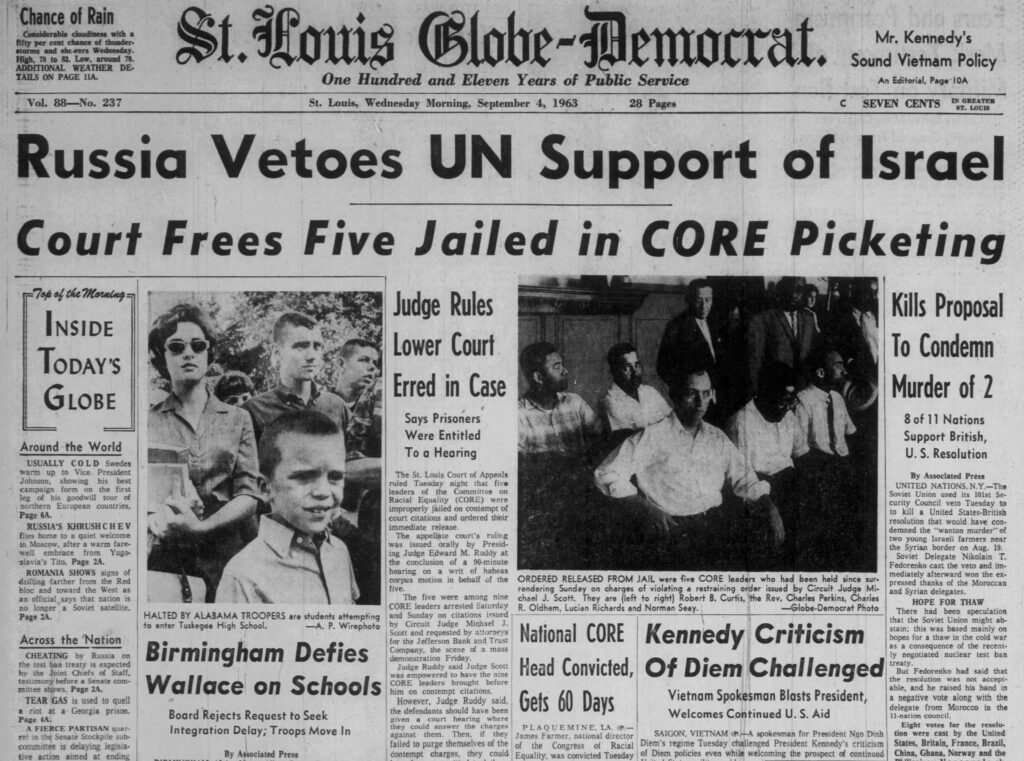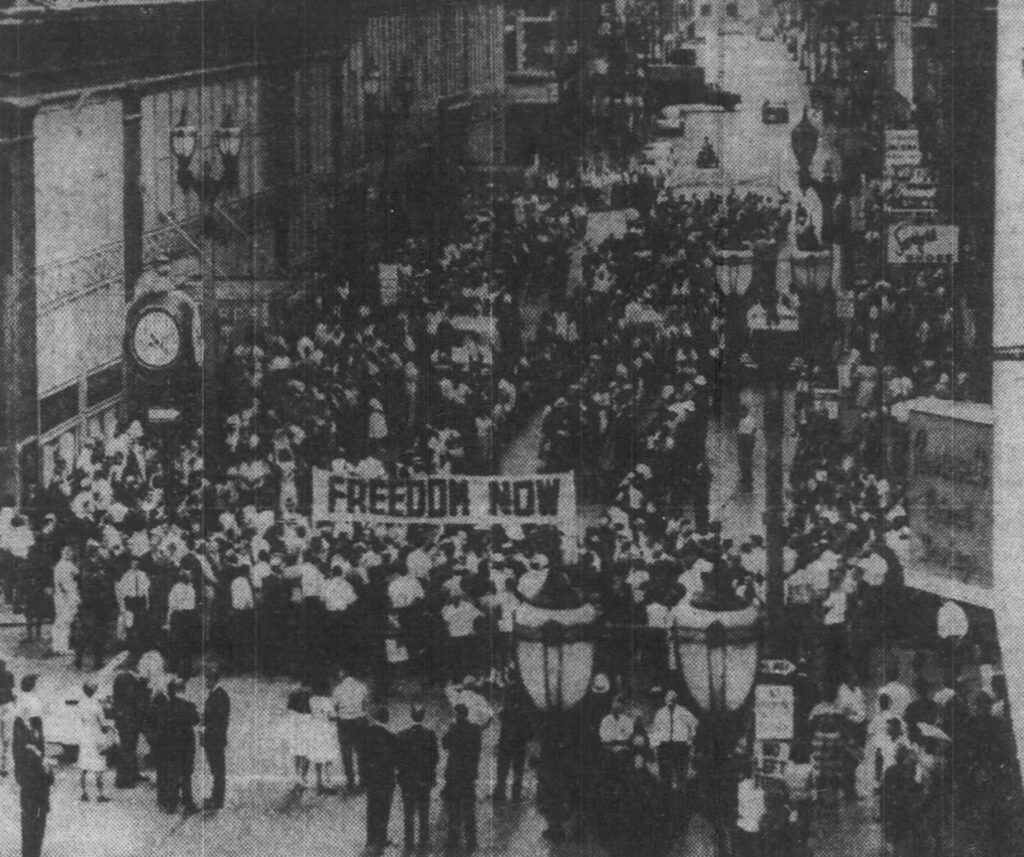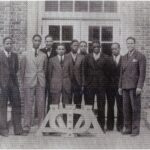As we mentioned in our January announcement, we have partnered with the Gaines/Oldham Black Culture Center to provide a scholarship to the University of Missouri. The selection process is moving along and we expect to have a candidate selected in the next few months. In the meantime, we thought it would be worthwhile to talk about the Black Culture Center’s two namesakes. This post will be about the civil rights activist Marion Oldham, and a future post will cover Lloyd Gaines. Much of this biographical sketch comes from her own words in an oral history recorded by the Missouri Historical Society in 1987.
Marion Clarke O’Fallon was born March 31, 1927 to parents James O’Fallon and Valetta Hairston in St. Louis, Missouri. At the time of her birth, her father James had a job playing piano in a local movie theater. Later that year the first “talkie” debuted which soon brought an end to live music in movies and her father had to look for other work, but he continued to serve as the organ player in their family’s church. The family moved to the Carondelet neighborhood and the only black school in the area encouraged Marion’s parents to enroll her in kindergarten at the age of 4 because they needed more students or they were at risk of closing. She eventually attended Sumner High School, which was the first black high school west of the Mississippi, named for the prominent abolitionist Charles Sumner.
She graduated high school at the age of 16 (due to the early start of her education), and as Mrs. Oldham recounts, a black woman seeking a career in St. Louis at that time was either a teacher, a nurse, or a cleaning woman. A family friend offered to help pay for her to attend Stowe Teacher’s College, which occupied what was known at the time as the Simmons Colored School, but would eventually merge with Harris Teacher’s College (an all-white school), to become Harris-Stowe State University. In the 1940s, St. Louis schoolteachers were not allowed to marry. This troubled Marion deeply, but shortly before she started her first job, the teacher’s union was able to reverse this policy. This episode, which she followed closely during college, served as her awakening to the larger political arena in which she would soon be operating. Following her graduation, she began teaching at Cote Brilliante Elementary School in January 1948.

In post-war St. Louis, there was a robust movement against segregation, and Marion Oldham became involved immediately after she started working. A family friend named Henry Winfield Wheeler (who would later become president of the St. Louis chapter of the NAACP) invited Marion to join him as he would stage picket lines at every Saturday matinee at the American Theater to protest their practice of selling inferior seats to blacks. Another teacher convinced her to participate in demonstrations at the Stix, Baer & Fuller lunch counter because they would not serve black patrons. It was here that she became heavily involved in the local chapter of the Congress on Racial Equality (CORE). Her involvement with CORE also led to her meeting her husband Charles Oldham, and they were married in 1951.
Both Charles and Marion were heavily involved in the civil rights movement in St. Louis, and their fellow activists in CORE worked to get three blacks elected to the Board of Aldermen so that they could enact a new Public Accommodations ordinance in 1962 and reverse decades of Jim Crow discrimination. One of those aldermen was William “Lacy” Clay Sr. and Charles Oldham served as his campaign manager. During the summer of 1963, St. Louis would see a wave of marches and protests, and the members of CORE would set their sights on St. Louis businesses that refused to hire blacks – one in particular was Jefferson Bank and Trust (on Washington Avenue).

The protests at the bank escalated during that summer from simple picketing outside, to sit-ins in the bank’s lobby, to “lie-ins” on the floor of the bank that disrupted operations. The bank sued the protestors and got a restraining order against them, but the protests didn’t stop. So by the fall of 1963, several were jailed for contempt of court, including Marion, her husband Charles (who was an attorney at a local firm), and Alderman William Clay, among others. Although they would leave CORE in 1964, Marion and Charles continued their activism for many years to come.
Although she was once denied admission because of her race, in 1977 Mrs. Oldham was recognized for her activism and appointed the first black woman on the Board of Curators of the University of Missouri, serving in that role for eight years. Marion Oldham died of cancer in 1994 at the age of 66.





Pingback: A Reluctant Hero – The Pipes Family Foundation